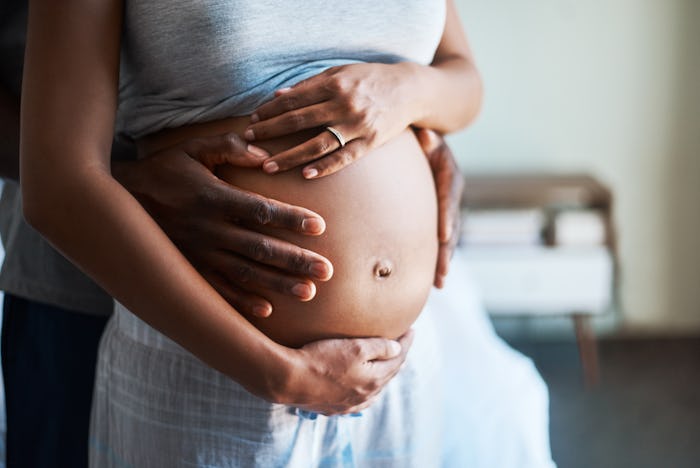Life

We Might Be One Step Closer To Knowing What Causes Stillbirths — & How To Stop Them
When a family is expecting a baby, there's nothing more heartbreaking than a stillbirth — but a shocking number of moms still have to endure that pain, with stillbirths affecting 1 percent of all pregnancies in the United States. 1 percent may not sound like a lot, but that comes to about 24,000 pregnancies a year, meaning stillbirths still outnumber annual Sudden Infant Death Syndrome deaths by 10 to one, according to the Centers for Disease Control and Prevention. Fortunately, one recent new study shed light on what could be causing stillbirths, which means we may be one step closer to stopping them.
According to a recent study published in the American Journal of Obstetrics and Gynecology, there is some evidence that stillbirths could be caused by placental aging. The Australian researchers who conducted the study found that the placentas they collected from stillbirths showed the same levels of RNA and DNA oxidation, lysosome distribution, and autophagosome size (all signs of aging) as placentas from late-term births, rather than levels similar to early-term and term births.
All of that suggests that placentas in stillbirths could be aging more quickly than placentas in live births, which would leave fetuses without the necessary nutrition and oxygen required to survive.
"If the placenta is not working, the levels of oxygen fall in the baby, and if they get low enough, the baby will die," Professor Roger Smith, who led the study's research team at the Hunter Medical Research Institute, told ABC News. He explained:
As you look around at everybody you know, you'll notice that different people age at different rates. And it's almost certainly the same with the placenta. Some placentas age more rapidly than others.
The benefits to Smith and his team's discovery are two-fold. First of all, if placental aging truly is what drives stillbirths, that means there might be a way to solve them — and Smith is already working on a tool to help doctors measure placental aging. In the next few years, he would like to develop a test that measures aldehyde oxidase, an enzyme emitted by a placenta that is breaking down, in a mom's blood.
"It's possible that we'll be able to develop diagnostic tests to pick up in the mother's blood the signs of ageing of the placenta, and therefore predict this devastating event, so that the obstetricians can perform a caesarean section and get the baby out before the baby dies," Smith told ABC.
Researchers could also work on developing a drug to inhibit aldehyde oxidase, which would slow a placenta's aging and allow earlier-term fetuses to stay in utero until they could safely be delivered via C-section.
Those developments could take several years of research, however, and are still in the theory phase. However, there's something that parents who have had to endure stillborn births can take away from this study right away, according to the research team, and that is absolving any feelings of guilt.
"It's really important for mums of stillborn babies to understand that it's not their fault," Smith told ABC News. "This is something that's happened to the placenta. ... There was nothing they could do to prevent it."
According to the American Psychological Association, women who endure miscarriages and stillbirths tend to have a higher risk of depression, anxiety, and postpartum depression, and many of them struggle with feelings of guilt. "They will spend enormous amounts of emotional energy trying to explain why it happened," Martha Diamond, coauthor of Reproductive Trauma: Psychotherapy with Infertility and Pregnancy Loss Clients, told the American Psychological Association. "They often blame themselves, even when it is inaccurate, to help make sense of it. Women may torment themselves with guilt and blame."
Smith and his team's research works as further proof that, usually, a mother is not at fault for a stillbirth — and it brings hope that one day, less moms will have to endure that loss.